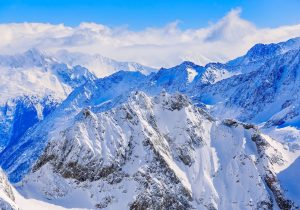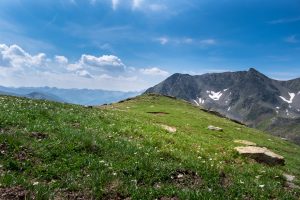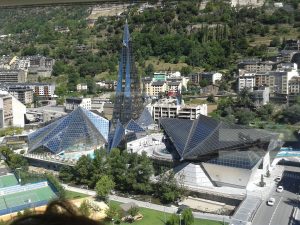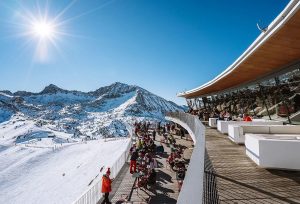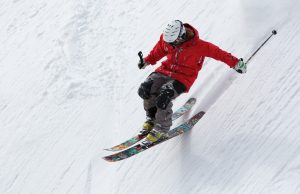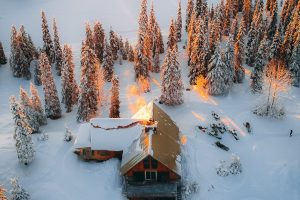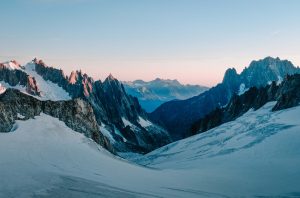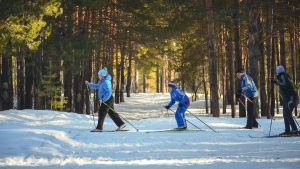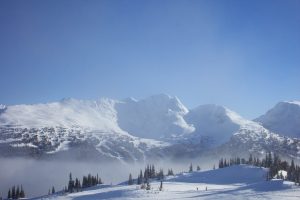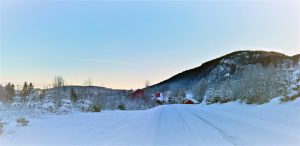In Andorra, there’s a large number of high mountain rivers and lakes where you can enjoy fishing in utter peace and quiet. What’s more, you’ll have fifteen controlled fishing areas, two intensive fishing areas, one catch-and-keep fishing reserve and eleven catch-and-release fishing reserves.
Fishing in Andorra is controlled and regulated to protect the species that live here. The maximum number of fish you can fish, take away and transport is eight per day and per fisherman, whether in unrestricted areas or special fishing areas known as “acotats”, except for those mentioned in the “acotats” list. As far as length is concerned, you can only keep and transport fish that are longer than 20 cm, measured from the most anterior part of the head all the way to the midpoint of the most posterior part of the caudal or tail fin. If the fish is shorter, it has to be returned back to the water. However, fish mentioned in the list of special fishing areas (acotats) are exempt from this rule. Finally, it is worth mentioning that in the section of the Valira del Nord River—between the confluence with the Arinsal River and the confluence with the Gran Valira River—or the Valira d’Orient River—in the section between the confluence of the Forn River and the Gran Valira river—, the minimum length for fish that can be caught or transported is 30 cm.
With regard to fishing hours, you can only fish during the day, that is, between daybreak and when the sun starts to set.
Enjoy fly fishing in Andorra
Among the fish species you can find in our lakes and rivers, the native common trout (Salmo trutta fario) stands out. You can also fish for brook trout (Salvelinus fontinalis) and rainbow trout (Oncorhynchus mykiss). Find out about the paths you can take into the deepest countryside; by following these you can reach lakes at over 2,000 m (6,560 ft) above sea level. Angling here is an unmissable experience! If you want to go sport fishing in Andorra in mountain lakes or rivers you’ll need a fishing licence. It is important to note that fishing licences are individual and non-transferrable and should be kept on you whenever you go fishing within Andorra. Seasonal licences have two parts: the Fisherman Registration Card and proof of the payment made for the current season’s licence. You should have both documents on you whenever you’re fishing.
Fishermen who have an MIL code (electronic certificate) and fishing licence may renew their season fishing licence by paying online via the e-tramits service. However, if a fisherman does not have this code (MIL), they will have to pay directly to the Procedures Section in the Government of Andorra’s administration building (c/Prat de la Creu, 62, Andorra la Vella), or to the parishes. Regarding the fishing licence, you may also apply for one in person at the Procedures Section in the Government of Andorra’s administration building or the parishes, and you must attach a copy of an official identity document—with your current address—and a recent 3.5 x 4.5 cm colour photo.
Why should you try fly fishing in Andorra?
In contrast, if you only want to fish for a certain number of days, you can apply for a tourist fishing licence, a permit to fish in special fishing areas or a catch-and-release permit. In these cases, you can apply online. It is forbidden to fish using fish (whether live or dead), fish eggs or cheese as bait. If you like to fish frogs, with the relevant permit, you can also fish the European common frog. However, the maximum number of frogs you can keep or transport—per fisherman per day—is 24 frogs. Finally, if you’re looking for accommodation where you can keep your gear well organised in a fully adapted space, Andorra offers several accommodation options specially for fishing holidays.
The fishing season in Andorra runs from 15 March 15 to 20 November for the rivers and from June to September for the lakes. Depending on the time of the season, the fishing will be drastically different, cold days and slower fishing at the beginning of the season or very warm fishing days in summer with a lot of surface activity. Although we achieve consistent fishing throughout the season, catches increase from the end of June until the end of the season.
Andorra offers a wide variety of accommodation, covering all tastes and pockets. You can choose the area that you like the most since crossing the country by car doesn’t take very long.
Where to go fly fishing in Andorra
The suggested equipment to be used in these rivers are usually one-hand rods about 10 feet long for lines # 3 to # 5. Tippet will depend on water conditions and the fisherman’s level, but in general, lines from 0.011 mm to 0.013 mm will be used. In general, tungsten heads from 2.5 mm to 4.5 mm are the most used depending always on the water conditions and the depth of the pool. During the summer months, dry fly fishing CDC type with natural colours (green, brown, black, garnet) is a spectacle in the small mountain rivers. Also used are large tricopters or similar to fish with a small nymph under (tandem). You can also use a barbless teaspoon for all those who do not feel comfortable with fly fishing.
Spain in the realm of the fly fishing world is pretty undiscovered, yet offers as high a standard of fly fishing as any other comparable place. Most come to the Pyrenees basin between Aragon to Catalonia to see the towering granite based mountainsides and incredible breath-taking views, but it’s the rivers and the amazing dry fly action in the spring, summer and fall months that many westerners are now discovering in Spain.
Andorra is a paradise for fly fishing although casting can be difficult as flies brake off on the rocks which make up the steep banks that surround most of the lakes. They also get caught in the trees and bushes along the streams. Roll or Steeple casting (for those that like to impress the natives) is therefore recommended for the lakes and tongue biting for the streams. Large hatches are rare, but the water is so clear that it’s like fishing in an aquarium. The insect life at that altitude is so different compared to valleys that it would be a good idea to take some fly tying equipment with you and tie as you go. Trichopteras, Sedges and Duns mounted on hooks from 12 to 16 and 9 to 10 foot rods with no’s 4 or 5 DT or WF lines should bring the best results.
Although Andorra enjoys a warm Spanish climate from Spring to Fall, things can get tricky even in the summer. Short but violent storms can crop up in no time and that’s when the mountain huts come in handy. The lakes being at a relatively high altitude, it can get cold at night. So a warm sleeping bag and a thick carry-mat are indispensable as well as a woolly hat and gloves for those lonely early mornings fishing sessions where your only companions are the marmots. As in any mountain environment, good footwear is essential.



